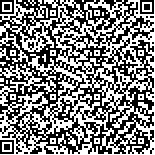下载中心
优秀审稿专家
优秀论文
相关链接
摘要

加速迭代硬阈值(AIHT)作为一种压缩感知(CS)算法,具有计算复杂度低、内存占用小的特点,在较小数目的观测下,经过有限次迭代便能获得较好的重建效果.因此,本文将该算法应用到逆合成孔径雷达(ISAR)稀疏成像,对该方法的具体特征和适用性进行了详细分析.仿真结果表明,在相同信噪比和回波脉冲数条件下,基于AIHT的ISAR成像方法,相比于稀疏贝叶斯算法(SBL),在重建时间上缩短了至少2个量级;相比于迭代加权最小二乘法(IRLS)和平滑l0范数算法,在重建质量上提高了约3倍.经实测数据处理结果验证,在1/4原始脉冲数条件下,该方法仍具有良好的聚焦性能和压低旁瓣效果.
Compressed Sensing (CS) in sparse microwave imaging has been extensively investigated. Inverse Synthetic Aperture Radar (ISAR) imaging problem can be transformed into a sparse signal representation problem. However, the performance of current CS-based ISAR imaging algorithms is usually limited in terms of reconstruction speed and accuracy; as such, existing algorithms are inconvenient for practical applications. Accelerated Iterative Hard Thresholding (AIHT) can be used to establish a trade-off between low computational complexity and strong performance guarantees in CS. Considering this condition, we determined the mechanism by which AIHT algorithm is applied to ISAR sparse imaging.In ISAR imaging, cross-range resolution is dependent on the total rotation angle of a target relative to the radar line of sight during observation. In a short observation time, high cross-range resolution is difficult to obtain using a conventional ISAR imaging algorithm because target-radar orientation variation is usually small. The CS method can be applied in ISAR imaging to obtain high-resolution images with limited measurements because space distribution of point scatterers is sparse. After an azimuth Fast Fourier Transform (FFT) is obtained, an echo signal can be expressed with sparse discrete points in a Doppler frequency domain. Based on CS theory, this study establishes an ISAR sparse imaging model, which contains an undersampling echo data in azimuth. AIHT is robust to noise to some extent; thus, this algorithm can obtain enhanced reconstruction results in a few number of observations. The AIHT method is also simple to implement and does not require computation, storage, and repeated use of matrix inverses. Therefore, this method provides an advantage in numerous CS applications characterized by measurement matrix that is often based on fast transforms, such as wavelet and Fourier transform. This study also compares various CS algorithms and rationally analyzes the specific features and adaptive mechanism of the AIHT algorithm applied to ISAR sparse imaging problem.Experimental results based on simulated and measured data show that the proposed algorithm maintains a more efficient balance between computation load and reconstruction signal sparsity than existing algorithms. The echo data in simulation experiments are added to Gauss white noise with 4 dB SNR; thus, half of the azimuth data are randomly selected and missing data are zero padded. A one-dimensional range profile is obtained through range alignment and phase correction; a two-dimensional ISAR image is then obtained through the azimuth processing. Results suggest that this method can effectively achieve imaging with few measurements of a complex baseband echo signal. This method is also focused on a large variation range of pulse number and signal-to-noise ratio. The advantage of reconstruction speed is apparent compared with other CS algorithms.This study shows that the ISAR sparse imaging method based on AIHT not only significantly reduces the time of imaging reconstruction but also improves the precision of imaging reconstruction. AIHT also exhibits a great advantage of processing real-time imaging or large-scale and high-dimension problems. Step selection and setting threshold strategy should be improved in further studies to maintain a more robust algorithm and avoid local minimum.

